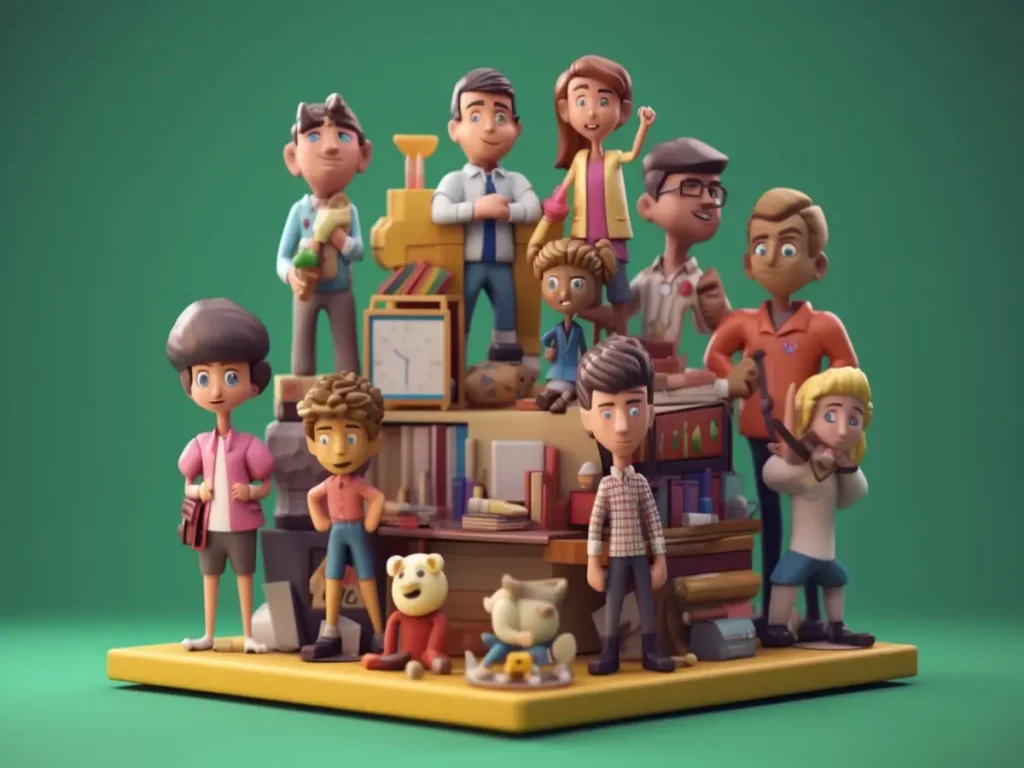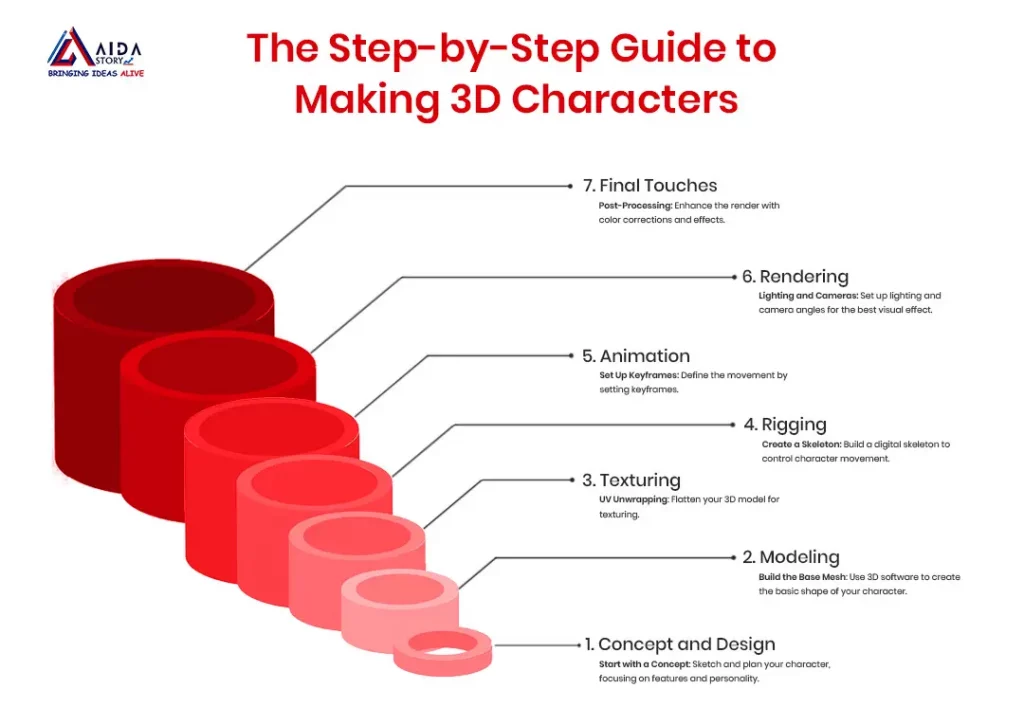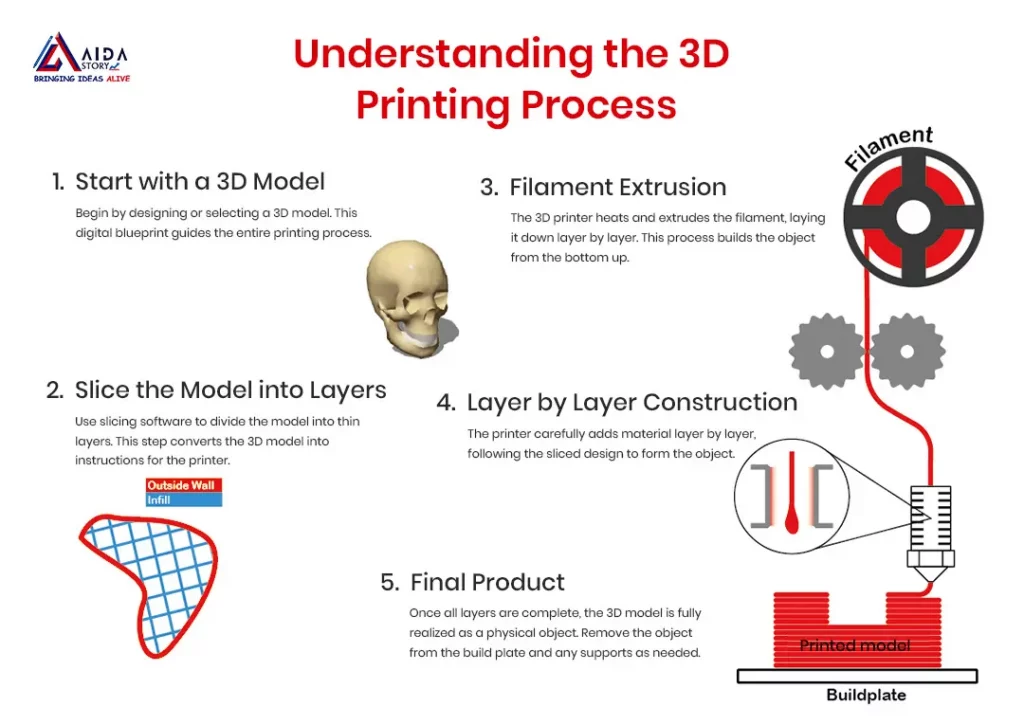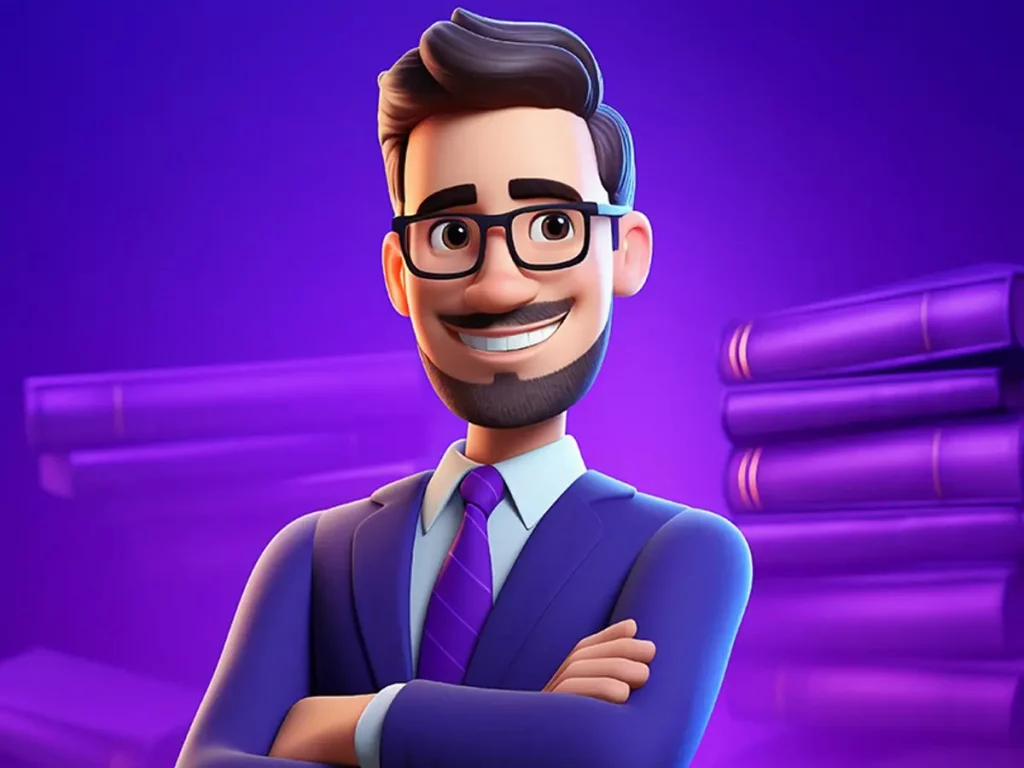
Modeling characters in 3D is a form of artistic work that requires imagination, technique, and knowledge of body structure, texture, and movement. It does not matter if you are new to modeling or have been doing it for years; learning how to make 3D characters means there are countless jobs in video games, movies, VR, and much more. Read on to discover the beginner-friendly, step-by-step guide with all the tools and techniques you need to animate your characters.
Learning the Fundamentals of Modelling on how to make 3D Characters
Before I discuss how to create them and how to use the tools and techniques of 3D character creation, it is important to know what 3D character creation is. 3D characters mean modeling human-like or imaginary creatures by sculpting, applying textures, and animating them. These characters are used in different sectors, such as gaming, movies, animated features, and virtual reality.

The process of making 3D characters can be broken down into several key steps:
Step 1 : Concept Art and Design
The first process of how to make 3D characters is the concept design; this forms the foundation of the model, where you come up with the design of the character, including the anatomic structure, the clothes, the accessories, and the coloration. When modeling a 3D character, concept art is a roadmap to follow throughout creating the character.
Tips for Effective Concept Art:
Study Anatomy: It is vital for producing excellent and proper character structure, especially in humans or other creatures.
Focus on Silhouette: A suitable thickness carries the character and accommodates them to be recognized.
Experiment with Different Styles: Whether a design is focused on realism or stylized characters, attempting different styles might produce fresh designs.
Step 2: 3D Modeling
3D modeling is the procedure of developing a description of your personality. In this step, the outline, forms, and any other details of the character are developed using software.
Popular 3D Modeling Software:
Blender: A group of free, open-source applications powerful enough to offer professional features.
Autodesk Maya: Normal Software is generally used in playing fields and films.
ZBrush: focuses more on digital sculpting, which is suitable for highly detailed characters.
Fundamental Techniques in 3D Modeling:
Box Modeling: Create a basic model of your character by starting with a cube and modeling it into your character.
Sculpting: Use digital sculpting instruments to create finer details on the model, including wrinkles, muscle tissue, and the face.
Retopology: This process brings the mesh to a state that could easily be rigged and animated for a character.
If you need a helpful guide of how to make 3D characters, Adobe’s Substance 3D Character Creator is perfect.
Step 3: Texturing
Texturing also includes color, details, and surface characteristics on the 3D model you are working on. Basically, it is the technique of painting on the skin of your model to give him or her the natural appearance he or she deserves.
Essential Texturing Techniques:
UV Mapping: A method of unrolling the 3D model so that the complex has been extruded on the plane for the textures to be applied correctly.
Baking: It is an essential step in game development. It involves separating some of the high-poly models from the textures relevant to the low–poly models.
PBR (Physically Based Rendering): A technique of texturing where light effects like reflective, glossy, or cases that involve transparent materials are imitated.
Various programs, such as Substance Painter and Mari, are currently used for texturing. These programs include features such as texturing where you can paint on your three-dimensional image and see the effects in real time.
Step 4: Rigging
Rigging is essentially the building of the bones of your character, upon which your 3D model is placed to make it animate. This step is essential so that your character can move and express himself or herself.
Rigging Basics:
Skeleton Setup: To do this, create a bone structure that resembles the character’s structure.
Skinning: Bake the bone’s skeleton so that the 3D model is attached and moves along with it when it is animated.
IK/FK (Inverse Kinematics/Forward Kinematics): Muscle activities applied to affect the functioning of limbs and joints of a human body.
Rigging may sometimes prove to be complicated. However, using May and Blender, which are moderately costly packages, facilitates the process of rigging. One must take time and verify that the rig is properly allowed so that the character moves freely and the dealing does not become tough.
Step 5: Animation
Animation adds life to your 3D-created character by providing action and character to your model. This step consists of making the necessary changes, such as making keyframes to control the timing of an object so that it moves smoothly.
Key Animation Techniques:
Keyframing: Adjusting the keyframing, which describes the movement within a given shot.
Motion Capture: To animate your character by using data from real-world movements.
Facial Animation: The ability to create expressions and lip-syncing to make the character more so to make the talking seem genuine and realistic.
An offshoot of this is that most character animation software, such as Maya and 3Ds Max, is applied. These programs give options of using keyframe animation by hand and also integrating mo-cap data.
Step 6: Rendering
Drawing is the last stage of everything addressed in how to make 3D characters. It includes creating the last image or series of images depicting your character. Shading completes the appearance of your character by incorporating the light and shadows that make it look OK.
Rendering Techniques:
Real-time Rendering: The techniques used to accelerate rendering and keep quality in view of game engines.
Ray Tracing: A technique that emulates the behavior of light and how it bounces on the objects and creates shadow and reflection.
Compositing: Applying detailed images in conjunction with the other components that form part of the scene such as backgrounds or effects as denoted by rendering.
Rendering can be done using software like Arnold, V-Ray, or game engines like Unreal Engine for real-time applications.

Materials and Aids Relating to the Generation of Three-dimensional Characters
An excellent variety of games involve character creation in the 3D space, and having the proper tools allows for work to be done faster and with less frustration. Here are some additional resources and tools to consider:
Adobe Substance 3D Character Creator: This tutorial explains how to make 3D characters using this tool, which has straightforward controls and heavy weights and is suitable for both ordinary people and experts.
Blender: Software available to the public may be modified and distributed freely for modeling, sculpting, and animation.
ZBrush: It is beneficial for little and accurate modelers and painters.
Maya: A tool that has become synonymous with 3D modeling, 3D animation, and 3D rendering of objects.
About the Online Self-Critiques:
Practice Regularly: Some people find it difficult to make 3D characters, but given the number of practices involved, it is straightforward to master. Spare some of your daily or weekly hours on your models.
Study Anatomy: Knowledge of human anatomy, human body structure, or creature structure will greatly boost the characters’ realism.
Learn from Tutorials: In fact, there are millions of instructional posts and videos on the Internet that correspond with each parameter of how to make 3D characters. Most websites, such as YouTube and Udemy, cover courses from entry-level to the professional level.
Join Communities: Some of the Q&As, like ArtStation and Polycount, are useful websites for showcasing your work, getting feedback on your work, and learning from other artists.
Experiment with Styles: You shouldn’t be afraid to change your style to the extreme, from highly realistic to cartoonish, to establish the one that fits best.
Real-time 3D Graphic: The Overarching Vision & The 3D Character Creation
I am happy that the future holds more convenient, faster, and interactive 3D character creation through technologies such as AI, Real-time rendering, and the integration of VR/AR technologies.
For example, base models, textures, and sometimes even animations can be created using AI tools, which saves a lot of time. Since real-time render abilities like Unreal Engine and Unity have been introduced, there is instant feedback that engineers can get and use to create their characters flawlessly.
In addition, the development of virtual and augmented reality will focus on the role of 3D characters when building the atmosphere. As these technologies progress, the need for professionals skilled in 3D character art will remain high.
Conclusion : How To Make 3D Characters
The process followed to create 3D characters is a fun and educative task that can only be done by an artist with mastery of some techniques. Whether you plan to work in the entertainment industry, create your own game, or break through to a new artistic level, understanding how to make 3D characters can unlock many possibilities.
If you want to make tremendous improvements, do not hesitate to check out professional software such as Adobe’s Substance 3D Character Creator. Keep yourself in the loop with what is currently trending in society.
Aida offers more information on branding and marketing and how to create in the digital realm. Here are the many services that we provide to assist you in building a powerful brand identity and achieving your creative objectives.
Suppose you are to practice these steps over and over again consistently. In that case, you are on your way to mastering how to make 3D characters that can interest people and take that particular project to a greater level.
FAQs How To Make 3D Characters
How to make 3D characters for novices?
To create 3D characters, use primary modeling programs like Blender. Concentrate on concepts such as shapes, textures, and anatomy to strive to create realistic artwork.
What program is suitable for creating three-dimensional characters?
Blender, Autodesk Maya, and ZBrush are other examples of software that is good for developing 3D characters and includes many tools for modeling, texturing, and animating.
How can one give a 3D character a realistic feel?
The first step in creating realistic-looking 3D characters is to study suitable skin textures, light sources, and character structures. However, for those who seek extra quality, borrow some tips and employ special applications such as Adobe Substance 3D.
Is it possible to model 3D characters even if I am a beginner?
The good news is that you do not have to be a professional to design 3D characters. There are many tutorials available for almost every topic on the Internet, but it is advised that a beginner begins by using free tools like Blender.
How long would it take to create the characters in 3D?
The time spent creating 3D characters depends heavily on their complexity. A basic one may take several hours to complete, while it may take days or even weeks to produce a realistic and highly developed character.


